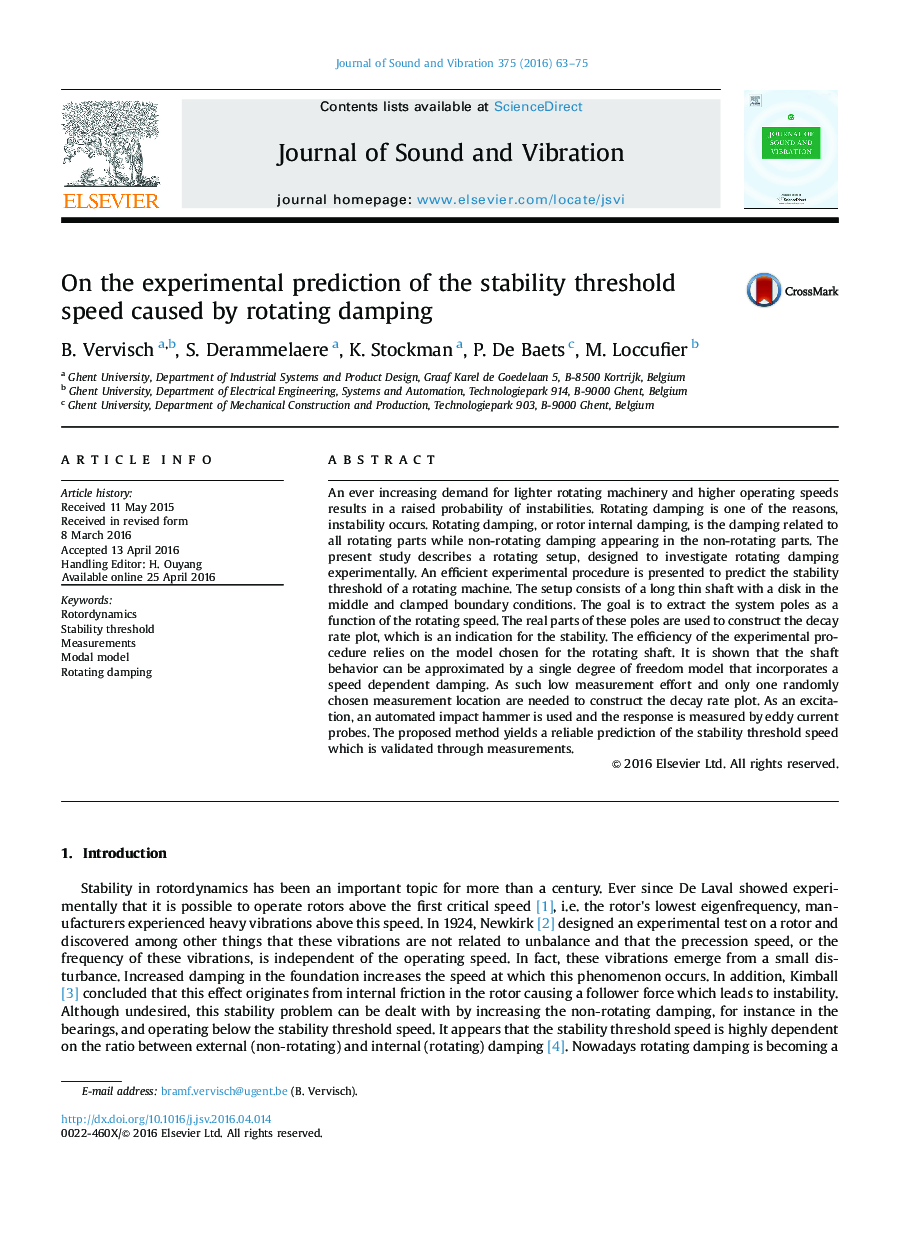| کد مقاله | کد نشریه | سال انتشار | مقاله انگلیسی | نسخه تمام متن |
|---|---|---|---|---|
| 286942 | 509526 | 2016 | 13 صفحه PDF | دانلود رایگان |
• Procedure to product the stability threshold speed is discussed.
• A single degree of freedom equivalent is presented.
• A dedicated rotating damping setup is presented.
• Detailed information of the measurements is provided.
• The theory is validated through measurements.
An ever increasing demand for lighter rotating machinery and higher operating speeds results in a raised probability of instabilities. Rotating damping is one of the reasons, instability occurs. Rotating damping, or rotor internal damping, is the damping related to all rotating parts while non-rotating damping appearing in the non-rotating parts. The present study describes a rotating setup, designed to investigate rotating damping experimentally. An efficient experimental procedure is presented to predict the stability threshold of a rotating machine. The setup consists of a long thin shaft with a disk in the middle and clamped boundary conditions. The goal is to extract the system poles as a function of the rotating speed. The real parts of these poles are used to construct the decay rate plot, which is an indication for the stability. The efficiency of the experimental procedure relies on the model chosen for the rotating shaft. It is shown that the shaft behavior can be approximated by a single degree of freedom model that incorporates a speed dependent damping. As such low measurement effort and only one randomly chosen measurement location are needed to construct the decay rate plot. As an excitation, an automated impact hammer is used and the response is measured by eddy current probes. The proposed method yields a reliable prediction of the stability threshold speed which is validated through measurements.
Journal: Journal of Sound and Vibration - Volume 375, 4 August 2016, Pages 63–75
